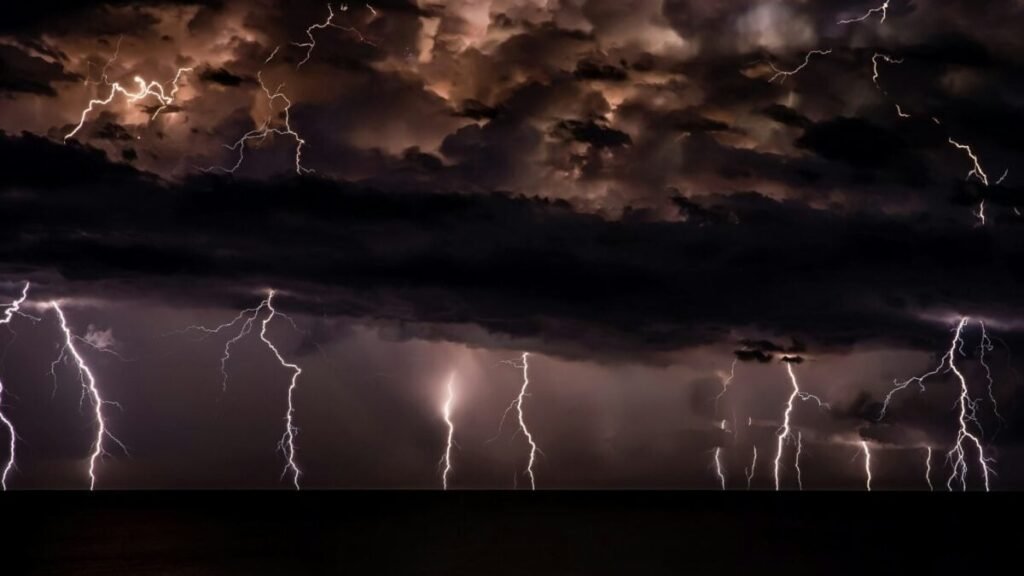Dry Thunderstorms: The Unnoticed Increase in Fire Hazard Intensifying under Extreme Heat.

Imagine a dark sky, filled with clouds, with lightning illuminating the horizon and distant thunder echoing… but without a single drop of rain to relieve the scorching heat. This is how dry storms are, a phenomenon in which precipitation evaporates before reaching the ground, leaving behind only electricity and wind.
The perfect fuel: heatwaves and dry terrain

The link between heatwaves and dry storms is not coincidental. Intense heat generates atmospheric instability and favors the formation of storm clouds, but it also creates the “trap” that evaporates the rain before it reaches the ground.
Meanwhile, days or weeks of extreme temperatures dehydrate vegetation, reduce soil moisture, and turn forests and fields into a powder keg. In these conditions, a single lightning strike can ignite a fire without any water to extinguish it.
Dangers beyond the fire
Dry storms not only generate lightning capable of starting fires. They also cause very strong downdrafts (dry bursts) that knock down trees and structures, and lift dust and sand, reducing visibility to dangerous levels.
When combined with wildfires, these fine particles severely degrade air quality. The result can be felt hundreds of kilometers from the original fire, affecting the respiratory health of millions of people.
In Spain, one of the most remembered examples occurred in 1979, in the Ayora-Enguera area (Valencia), where a dry lightning strike during a heatwave caused a fire that ravaged 44,000 hectares. A precedent that today, with climate change intensifying heatwaves, is becoming increasingly likely.
[Source: ]






